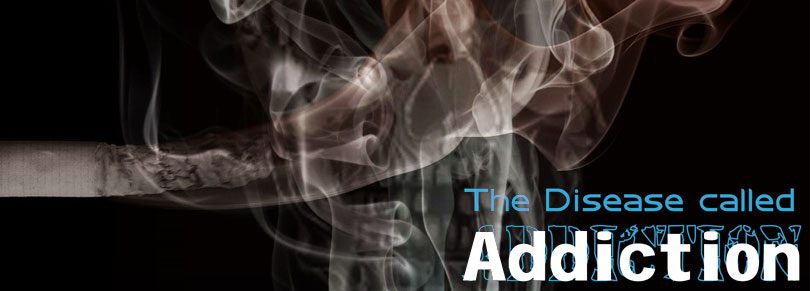 Mr. Vijayan Pavamani and his wife began the crisis intervention work in 1971. They were deeply struck by how many were enslaved to substance abuse from the wealthy to the poor and started the Arunoday Midway Home, the first residential Rehab in India.
Mr. Vijayan Pavamani and his wife began the crisis intervention work in 1971. They were deeply struck by how many were enslaved to substance abuse from the wealthy to the poor and started the Arunoday Midway Home, the first residential Rehab in India.
In the area of addiction they partner with the Ministry of Social Justice and Empowerment and with NACO to provide the complete infrastructure for treatment, rehabilitation and Vocational training. The Calcutta Samaritans offers a broad spectrum of prevention and intervention services in Kolkata, Jamshedpur, Jharkhand and have one of the best recovery rates in the field.
In this interview, the experts at Calcutta Samaritans provide in-depth insight about addiction and shed light on lesser known In this interview, the experts at Calcutta Samaritans provide in-depth insight about addiction and shed light on lesser known
What is addiction?
Addiction is any kind of obsessive and compulsive behaviour towards anything. There are different types of addiction such as food, gambling, sex, pornography, etc. Addiction to different types of drugs is life- threatening and even fatal. This obsessive behaviour changes the personality of a human being beyond recognition in the long run.
Why do you call addiction a disease?
Addiction to drugs is considered a disease primarily because there are visible signs and symptoms in a person who become dependent on it. The World Health Organisation, WHO, considers the disease of addiction to drugs (and alcohol) to be one of the most dangerous diseases simply because it percolates into every area of a person’s life. In fact, a full-blown addict will not find a single area of his life that has been spared by this disease.
The addiction makes a person temporarily insane as he begins to do things that he would have otherwise never dream of doing. There is a quote in the recovery program that says, “We are not bad, we are not mad, but we are sick.” By implication it means that if we allow the disease to be activated, it will, in due course of time, make us both bad and mad.
The sickness will always remain in a latent/passive state right through a person’s life and consumption of any mood-altering substance will ignite the sickness once again. In fact, this disease is actually not curable as there are no pills to reduce/eliminate the urge to use drugs. However, it is a preventable disease or a treatable disease if one were to follow the program principles one day at a time for the rest of a person’s life.
|
The real danger with this disease is that it creates a pleasure sensation in many that is extremely addictive. It also has the capacity to enhance music reception and self- confidence as well as performance (often referred to as ‘performance-enhancing drugs’). The pleasure factor only stays for the initial period after which it really does become a pain when looked at realistically. However, in spite of the pain, it is pleasure that recovering addicts cannot forget and, in the process of looking for temporary pleasure, he falls headlong into dependency once again. That is why the latest definition of the disease of addiction has been defined as: The disease IS the pleasure. |
How can one identify signs of someone slipping into substance addiction? What can we do to help, especially as family and friends?
There are some general signs that show that a person has become dependent on one or more substances/drugs. Some of these signs are lack of appetite, general deterioration of physiological health, abnormal and abrupt disappearance while working, visible fatigue, especially on the face, loss of priorities, etc.
There are some types of substances such as heroin and brown sugar which are direct derivatives of opium and are very addictive. Some obvious signs of heroin/brown sugar use are increased demand for money, violent behaviour, especially at times when the drug-dependent is going through physical withdrawals, stealing, cheating, etc. Similar symptoms are also visible for a person who is a complete alcoholic as well. In fact physiological damage is more pronounced in alcoholism.
Is there a profile of an individual who is more prone to addiction?
For a recovering alcoholic it has been found that parents or family members who drink together at home is certainly more dangerous. Parents who encourage their children to drink covertly stand a bigger chance of contracting the disease. Statistics have indicated that if the father is or was an alcoholic, the chances of the son becoming an alcoholic is greater than 50%.
While there are more chances, it has not been validated that this condition will always be true. Families where either the older brother or brothers are heavy consumers of alcohol the chances of younger siblings getting addicted are very real. Sometimes it is hard to estimate who will actually have the disease and medically it has not been authenticated so far. All we know is that since the disease is essentially a psychological one, much depends on the mental conditioning/make up of the person.
How do young people know where to draw the line when experimenting with addictive substances like alcohol?
In this regard there is an issue that needs to be clarified. These days most people do consume alcohol, but only a few carry the disease of alcoholism (less than 15% according to different surveys conducted). Those who really have the disease will actually sustain their drinking in spite of problems that begin to show in his/her daily life.
This is primarily because the person with the disease thinks that he can perform better while under the influence of alcohol as the disease gives him a false illusion that he could excel at work or any other activity. Thus dependency begins to grow and, over a certain period of time, he will have to consume liquor even for doing normal routine things. Soon he reaches a stage where he will not be able to function at all unless he has alcohol.
This is often called the “progression of the disease” and in the case of opium derivatives, this ‘progression’ is much quicker. That is why you will not see a brown sugar abuser doing his drug socially (like a social drinker of alcohol). He will very rapidly get hooked to his substance and in most instances, it is next to impossible to quit on his own. This is because of severe physical withdrawals that he will experience while doing so and the pain will make him go back to the substance for immediate relief.
Young people need to be educated of the different types of drugs that are available and the consequent damaging effect such drugs can have on the person. While the starting age for doing drugs in the 80s were after 20 years, these days even school-going kids are getting dependent on drugs in the age group of 13 to 16 years.
How do people become aware of their problem? / How do they know if they need treatment?
People who do not have the disease get to know for a fact that their lives are getting out of hand and they decide to quit. But the problem is for one who has the disease. He will not usually stop even when major problems begin to surface in his daily life simply because of the pleasure that he derives from his substance.
For him the “high” of the substance becomes like a habit and in most situations he would prefer to be in that “high” state of mind. In such situations the person is generally forced into treatment, as under normal circumstances most addicts would not like to come for treatment on their own. Here, the role of the family as well as the treatment providers is important.
|
Generally speaking, when the person has reached a situation where he has lost one or more jobs due to drug-dependency, when he has got into a habit of lying and manipulating mostly for money to sustain his addiction, when he has been avoiding people in general and is constantly lying about his condition -that is the time that he will need to go through the treatment. |
However, it is better to go for a treatment before the person reaches such a state.
How much is too much when assessing if a person is an addict?
Anything more than one bottle of alcohol a day (750ml), whether in binge or in one stretch, is definitely a case for going into treatment. In case of certain types of pills/capsules such as Spasma Proxyvon, Nitrosun-10, Relipan, and other downers/sedatives/ pain killers anything more than a strip a day is a case for treatment.
What happens when an addict is brought in for treatment?
An addict typically goes through physical withdrawal from not getting his/her drug. Withdrawals with brown sugar is restlessness, severe joint pains, yawning, feeling cold even on a warm day, often called “cold turkey”, watery eyes and nose, etc. In other opium derivatives, symptoms such as drying of throat, joint pains, feeling uneasy and a sense of discomfort on a prolonged basis in addition to anxiety, faster heat-beat, sweating, and loss of appetite are some of the most common symptoms of withdrawals.
Most of these physical issues are taken care of in the Detoxification Centre, often called “withdrawal management.” Once the client gets over his physical problems and thinks clearly he makes his way to a rehabilitation program. The stay in the Detox unit is for a month – this is actually a government guideline. During the second half of the Detoxification process, we do what is known as the CBT, or Cognitive Behavioural Therapy, which helps the client to understand himself and his trigger areas.
The CBT is a preparatory therapy for the 12-Steps program which is a program tool based on the self-help principles of Alcoholic Anonymous that is essentially geared to help a person to live a drug-free life. The 12-Steps as a model for treatment has been the most successful and validated and probably the most popular in terms of implementation.
What is the success rate with de-addiction / chances of relapse?
The success rate is the most controversial issue that beset treatment Institutions. Although there are treatment providers who show a success rate of over 50%, according to the WHO, if an Institution is maintaining a success rate of 15 to 20%, it is actually doing very well. It has been found from different studies and surveys at Hazelton that the mean/average number of relapses for a recovering drug user is 3.
Thereafter, the recovering user succeeds in living the drug- free life. Is there hope at the end of the tunnel for addicts and families of addicts? There is hope for the families of the addicts as well as for the addict himself. Today there are many recovering addicts who have been sober for many years and if one were to talk to them today, he would never believe for a fact that once upon a time they were drug- dependents.
There have been profound transformations and that is the reason why even many non-addicts in different parts of the world actually learn and practice these principles for a more fulfilling life. It is really a powerful tool for recovery and one that has been validated for the past 60 years, if not more.
The problem of drug addiction seems to be growing in India. What is being done about this by the authorities?
There is absolutely no doubt that the problem of drug abuse is on the rise in our country. It has reached epidemic proportions in the North-Eastern states. However, in the past one year or so there have been some strong campaigns against drug abuse in the North- Eastern states and the results have begun to show.
The Government can do very little to reduce drug abuse except to warn people about the dangers. It is practically impossible to stop the sale of drugs primarily because there is big money involved. One kilogram of pure heroin in Europe would cost not less than Rs.1.5 crores. At the moment, the “Golden Crescent”, spreading through Afghanistan, Iraq and parts of Pakistan and Iran is the largest producer of opium and heroin.
Thailand and Vietnam continue to produce opium and opium based drugs and the best quality heroin, popularly called “Thai”, is made in Myanmar and Cambodia.
What do you see as the greatest action that needs to be taken to overcome this problem?
In India, there has to be greater awareness and education of the dangers of drug- dependency. The government does not support rehabilitation for drug-dependents. It only supports Detoxification to Institutions who have a proven track record in this activity. However, like in most western countries, there is a need to support the rehabilitation program because this is the main part of the treatment.
Considering the fact that drug abuse is increasing in leaps and bounds, it becomes almost necessary to allocate funds for this purpose. The government in this country needs to educate itself more about this menace that has been besetting most metropolises. The fact that it is a psychological disease is still not clear to government agencies, which explains in part why it does not attach the kind of importance rehabilitation of drug abusers actually deserves.
It is understandable that the government has other priority areas such as poverty, trafficking, HIV-AIDS, etc., but in the foreseeable future drug dependency will have to be addressed as this disease has been systematically destroying individuals and families in the recent past. Certain legal regulations also need to be put in place to prevent exploitation of hapless families who seek help for the problem.
Calcutta Samaritans receive calls and welcomes people who drop in at their office at 48 Ripon Street, Kolkata (Tel: 2229-5920/9731, 2217-7871).





